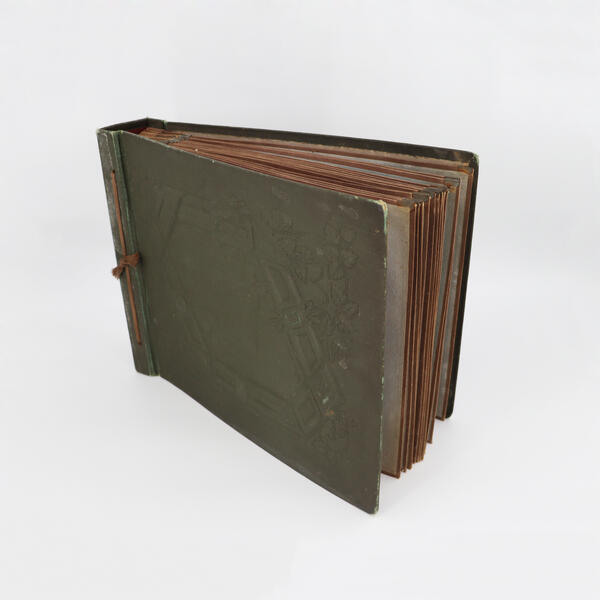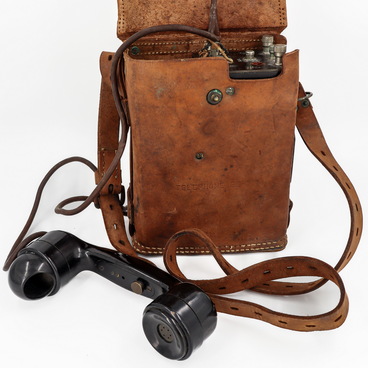Emile Berliner is considered to be the creator of a gramophone record. In 1887, he patented his invention, which enabled the storage of various audio recordings for a long time. The first records were produced from ebonite and shellac (an organic material) and were nondurable. The need arose to make special albums to store them.
In the early 20th century Russia, records and packaging for them were produced at the same location. For example, albums were made at a factory in the village of Aprelevka near Moscow, which coexisted with the country’s largest record production facility. It is also worth mentioning that, during the Second World War, the facility produced records with only one song called “The Sacred War”, while most of the departments were focused on supplying aerial bombs.
Phonograph records required special storage conditions. For one, they had to stand vertically, because they varied in thickness, and being in a horizontal position for a long time could lead to deformation. To prevent this from happening, the albums had a hard cover and sometimes metal edge protectors for greater durability.
In addition, unlike record sleeves, the thick cover of an album protected the contents from mechanical damage. Individual sleeves in such an album prevented records from contact with dust and dirt, as well as reduced the possibility of minor scratches. When closed, the album preserved records from the negative effects of sunlight and provided safe and neat transportation of several music discs at once.
Albums for phonograph records had various designs: records could be arranged either in separate sleeves or in twos on different sides of one page in a way that resembled an expanded accordion.
In the Soviet Union, there were various ways for albums for phonograph records to look. Covers could be made of cardboard and leatherette. Most often they were decorated with various ornamental patterns or embossing. If records were dedicated to a certain topic (an opera or a policy speech), the album for them could be illustrated accordingly. Their leather covers often featured profiles of famous people, for example, the Minister of Foreign Affairs of the Soviet Union Vyacheslav Mikhailovich Molotov or the composer Nikolai Andreyevich Rimsky-Korsakov.
In the early 20th century Russia, records and packaging for them were produced at the same location. For example, albums were made at a factory in the village of Aprelevka near Moscow, which coexisted with the country’s largest record production facility. It is also worth mentioning that, during the Second World War, the facility produced records with only one song called “The Sacred War”, while most of the departments were focused on supplying aerial bombs.
Phonograph records required special storage conditions. For one, they had to stand vertically, because they varied in thickness, and being in a horizontal position for a long time could lead to deformation. To prevent this from happening, the albums had a hard cover and sometimes metal edge protectors for greater durability.
In addition, unlike record sleeves, the thick cover of an album protected the contents from mechanical damage. Individual sleeves in such an album prevented records from contact with dust and dirt, as well as reduced the possibility of minor scratches. When closed, the album preserved records from the negative effects of sunlight and provided safe and neat transportation of several music discs at once.
Albums for phonograph records had various designs: records could be arranged either in separate sleeves or in twos on different sides of one page in a way that resembled an expanded accordion.
In the Soviet Union, there were various ways for albums for phonograph records to look. Covers could be made of cardboard and leatherette. Most often they were decorated with various ornamental patterns or embossing. If records were dedicated to a certain topic (an opera or a policy speech), the album for them could be illustrated accordingly. Their leather covers often featured profiles of famous people, for example, the Minister of Foreign Affairs of the Soviet Union Vyacheslav Mikhailovich Molotov or the composer Nikolai Andreyevich Rimsky-Korsakov.


